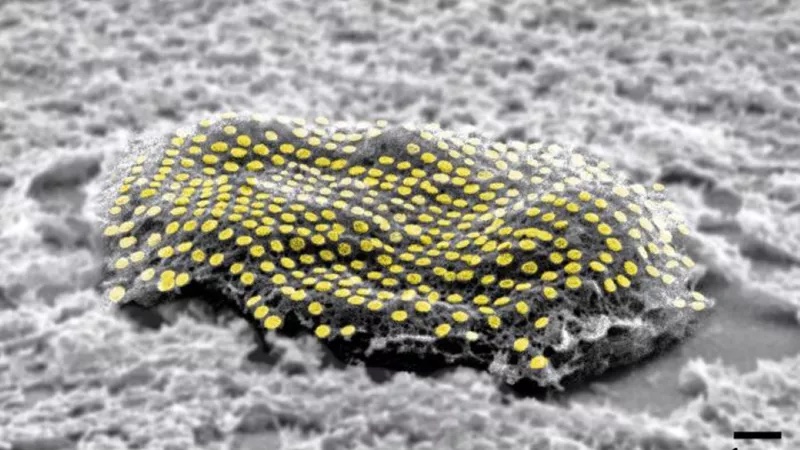
Advances in nanotechnology have already enabled the creation of intricate materials for tissue engineering, drug delivery, and diagnostics within the human body. But could nanotech extend its reach to monitor the health of individual cells? It might sound ambitious, yet a team of researchers and engineers from Johns Hopkins University believes they have achieved just that.
Nanoscale Marvel: A Tattoo for Cells
A pioneering innovation has emerged from the labs of Johns Hopkins University – an electronic tattoo designed to monitor the health of individual cells. These tattoos are not your conventional ink designs; they are marvelously minuscule, mere fractions of a pinhead in size. Comprising tiny dots and wires, these tattoos have the extraordinary ability to adhere to and conform to the contours of live cells.
David Gracias, a professor of chemical and biomolecular engineering at Johns Hopkins University, spearheaded the development of this groundbreaking technology. He describes these electronic tattoos as the inaugural stride toward equipping live cells with sensors and electronics, enabling unparalleled insights into cellular health.
Similar in function to barcodes or QR codes, these electronic tattoos perform the remarkable feat of staying affixed to soft live cells for an impressive span of 16 hours. According to Gracias, they bridge the divide between living cells, tissues, and conventional electronic sensors, ushering in a new era of cellular monitoring and understanding.
Constructed from arrays of gold, these tattoos are designed to attach to a specific type of cells in the human body responsible for tissue maintenance – fibroblasts. Gold, renowned for its exceptional conductivity, effectively prevents signal degradation and distortion in the intricate electronic wiring of these tattoos.
The Choreography of Attachment
The tattoo’s journey onto the cell surface is a meticulous dance. Researchers treated the gold arrays with molecular glues and then delicately transferred them onto the cells, employing an alginate hydrogel film. This film, a gel-like substance, serves as a temporary platform for the gold to establish a secure bond with the cell. Notably, the molecular glue forms a connection with the extracellular matrix secreted by the cells, ensuring compatibility.
Unlike random assemblages of dots and wires, these electronic tattoos are engineered with precision. Each array possesses specific spacing, forming an intricate nanopattern. Gracias emphasizes the significance of this design, highlighting that the cells not only survive but thrive alongside the tattoos. This achievement is remarkable as the methods traditionally employed by engineers to fabricate electronics often clash with the needs of living cells.
The horizon for this technology is vast. Gracias and his team are dedicated to extending the tattoo’s functional duration beyond 16 hours, a feat that promises even more comprehensive insights into cellular behavior. Furthermore, they are exploring the potential of attaching intricate nanocircuits to various cell types within the human body, opening doors to a realm of unparalleled understanding.
The electronic tattoos devised by the researchers at Johns Hopkins University are not just ink on skin, but a revolutionary leap into the realm of cellular health monitoring. With their ability to harmonize with live cells and provide a window into their intricate workings, these tattoos herald a new age of medical diagnostics and understanding.
What was once the emblem of rebellion and the flagbearer of counterculture now reveals itself as a surprising twist – tattoos, it turns out, might not be so villainous after all.







